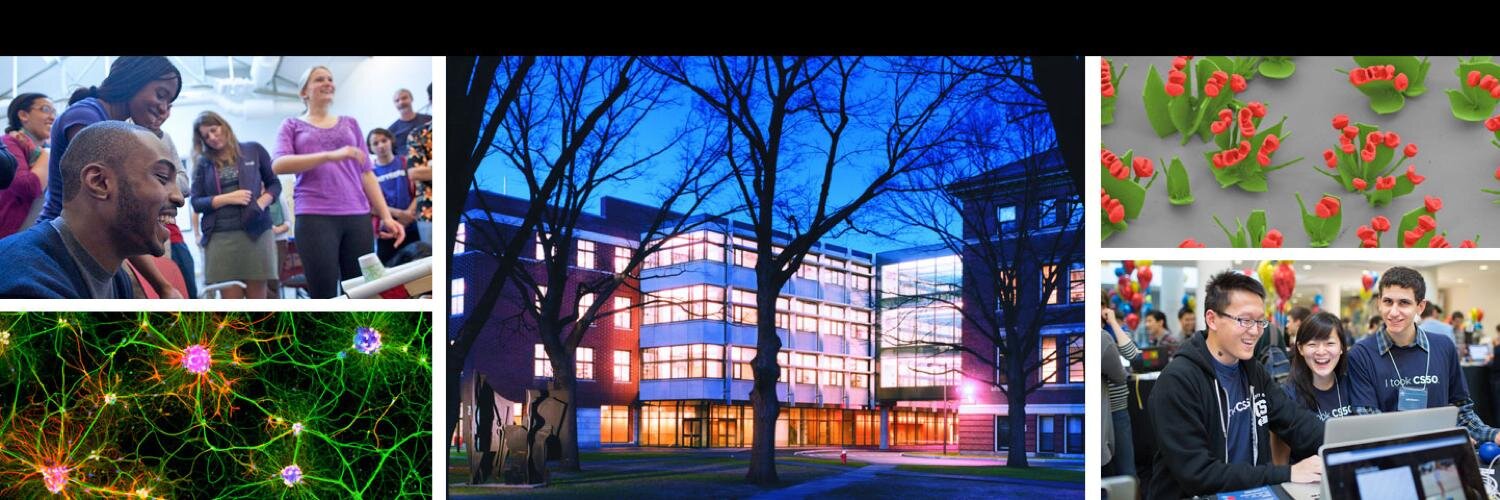
Harvard SEAS
@hseas
Harvard School of Engineering and Applied Sciences (SEAS) is where engineering, foundational science and the liberal arts converge.
#Hydrocephalus is a condition in which excess cerebrospinal fluid collects in the brain. SEAS researchers have developed a computational model that simulates fluid flow around brain shunts, with the goal of making better devices with fewer complications. bit.ly/40w5CXY

Researchers have created a thin, stretchable device that can be implanted into a tadpole embryo’s neural plate, the early-stage, flat structure that folds to become the brain and spinal cord. The device records electrical activity from single brain cells. bit.ly/4dR00wM

Could metasurfaces be the next quantum information processors? Researchers blend theoretical insight, experiments to entangle photons on an ultra-thin chip bit.ly/4kStXi0

SEAS and @HarvardHBS alum Nora Barr Hennings has dedicated her career to the U.S. transition to renewable energy. As Head of Fleet & Facilities at Sunrun, she champions solar power and battery storage, supporting homes and critical industries like AI. bit.ly/4lMRJ0e

SEAS researchers have built a robotic platform inspired by California blackworms, where individual robots tangle together into large, active blobs. They aim to study dynamics of entangled group behaviors. bit.ly/44MxlET

An interference pattern that emerges from three stacked and twisted layers of graphene, called a supermoiré pattern, can uncover hidden properties of simpler moiré materials. bit.ly/40KazMQ

A team at Harvard SEAS and @tu_wien have invented a new tunable laser that uses a series of rings to smoothly emit many light wavelengths from a single chip. bit.ly/4lk0hLA

SEAS students partnered with Eli Lilly to develop TempSense, a temperature-sensing portable storage device designed for last-mile drug delivery. Cold chain logistics failures lead to billions of dollars worth of medicine lost each year. bit.ly/4lObc04


Rayhaan Saaim and Edwin Dominguez have helped get Harvard’s Automotive Society back on track! Two of seven 2025 SEAS seniors to work on race car components as senior capstone projects, they’ve laid the foundation for Harvard to compete in Formula SAE. bit.ly/3Ts7Kfy




A new type of locomotion in juvenile anacondas is called the “S-start” due to the shape the snake makes with its body. bit.ly/4lar9O0

SEAS researchers have demonstrated that they can grow green algae inside shelters made out of bioplastics in Mars-like conditions, a first step toward designing sustainable habitats in space that won’t require bringing materials from Earth. bit.ly/4esG2ZD

Karina Chung is bridging computer science and climate action. Her work on SMRT-FLAMES, a wildfire management app, helps land managers account for smoke exposure. Karina co-authored the tool's first paper and leads at the Harvard Computer Society. bit.ly/44qanDn

A new online platform from SEAS atmospheric modelers can identify areas in need of land management in order to reduce future smoke exposures from wildfires. bit.ly/4l4RmO8

We rely on carbon for everything—from fuels to clothes. What if we could convert atmospheric CO2 into fuel? SEAS alum Kirsten Van Fossen now at Northeastern’s Barecka Lab, is doing just that—turning CO2 into sustainable aviation fuel. bit.ly/44apVuY @NU_ChemE


For their senior capstone project, John Pojman and Jack Shea designed a wearable air conditioner that blows moist air through a moisture-absorbing chemical and over the human body, facilitating perspiration in humid conditions. bit.ly/3ZLI1Ce


At age 8, SEAS bioengineering alum Teagan Stedman turned a rock concert for a friend with cancer into a non-profit that raised $500K+ for pediatric cancer research. Now a PhD student at @ColumbiaMed, he student studies synthetic biology & cancer treatment. bit.ly/4kE1LA2

For her senior capstone project, Genna McQuillan used fluid dynamics to simulate methane plumes. This validation framework is broadly applicable to methane-tracking satellites such as the MethaneSAT satellite designed at SEAS and launched in 2024. bit.ly/4dBOc1n

From @washuese undergrad to SEAS PhD, Vince Wu was inspired to use semiconductors for cell biology—a tech with game-changing potential for drug discovery. Today, @CytoTronics is enabling high-throughput cell analysis with its award-winning Pixel platform. bit.ly/4kGuxzM

A soft robotic system composed of centimeter-scale, 3D-printed particles strung into V-shaped chains are capable of coordinated, life-like movements without any embedded power or control systems. bit.ly/3SHWtHy

For his senior capstone project, Agustín León Sáenz developed a low-cost way to detect copper in drinking water. He was inspired by the Ecuadorian province of Napo, where illegal gold mining has contaminated local water sources for over two decades. bit.ly/4dGrmWo
